Ubisoft set expectations high when they first unveiled Tom Clancy’s The Division at E3 2013. The original presentation showed a game that was gorgeous to look at, contained interesting gameplay elements, and featured team tactics that would rival the best shooters. That video has since been shown to be a bit of an overreach, with various elements of the game getting downgraded, and the scope shifting a bit. However, now that the final product is out in the wild, it’s pretty surprising to see how closely it came to those lofty targets. The end result is a loot-based shooter that truly satisfies, on top of being one of the best looking games out there right now.
Comparisons between The Division and Destiny may be tired at this point, but they serve a very important point. Both games are shooters that are heavily based around RPG, and MMO mechanics, with loot playing a central role as well. One of the areas where The Division stands head and shoulders above its closest competition is in the story department. There isn’t too much that is totally unique here, with a special group of soldiers known as “The Division” becoming activated in the wake of a pandemic. Virus contaminated money has resulted in an infected and decimated New York City, with scavengers and other bad guys running rampant. It’s up to you and your fellow agents to take them out, and try to restore order to the chaos.
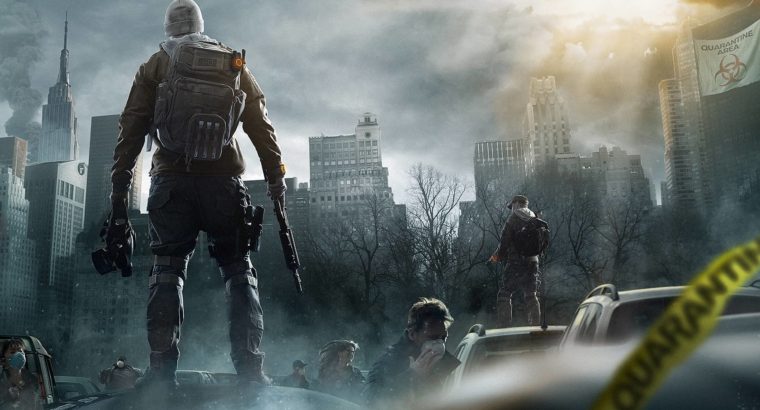
The Division goes to great lengths to actually make you care about its story, featuring interesting and colorful characters, and a relatable narrative that might not win awards, but will certainly keep you engaged throughout. There is even a healthy amount of side material to dive into, all of which is found in the game’s menu system, ready to be played at the touch of a button. The missions, likewise are always laid out beforehand very well, giving you at least somewhat of an idea as to what you are doing, and why. What you do on those missions can be a bit repetitive, but few fans of this increasingly popular genre will be bothered by that.
The Division goes to great lengths to actually make you care about its story
Tom Clancy’s The Division is very much a loot-based shooter as we have come to understand them over the last few years. You, and hopefully a squad of your friends, go through missions that are full of bullet-spongy enemies. Taking out everything in your path, the hope is that they will drop randomly generated loot, which in this case take the form of weapons, gear, and consumable items. The fights play out very much like other third-person shooters, with an effective cover system allowing for Gears or Mass Effect 2 style combat.
The gunplay is sort of a middle ground between standard Tom Clancy realism, and more arcade-like shooters. Enemies take cover almost universally, so the key is flanking with your teammates. Playing on your own works, but will become increasingly frustrating as the game progresses. What you really want is a good balance of weapon types on your team, allowing you to maneuver around, and take out enemies, who don’t really act all that smart, but take a lot of bullets to take down.
This leads to one of the many moments where The Division breaks the immersion that most games rely upon. Of course shooting a human enemy in the head should take them out in one shot, but it doesn’t really work in a level-based shooter like this. Giving enemies more armor would help, but would likely become cumbersome and unbelievable in its own way as enemies grew in strength.
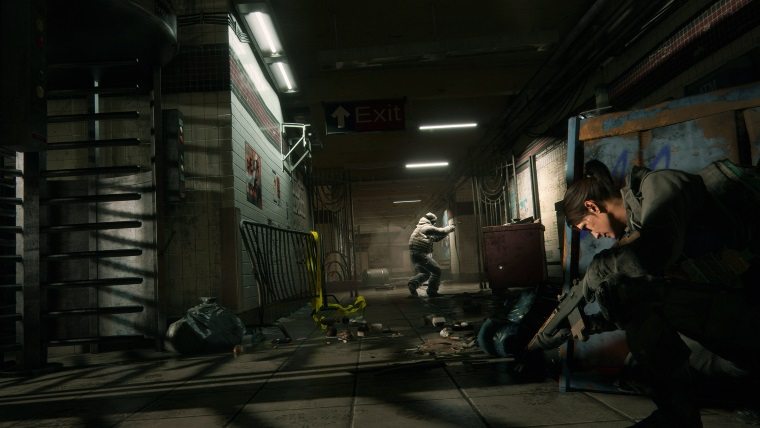
Elsewhere, it is odd to be told how specialized and important Division agents are, only to find a dozen of them or more running around your various safe houses, some while doing jumping jacks. Still, while this can be frustrating, it’s sort of necessary to set up the gameplay in the manner it needs to be, so it’s one of those things that you either accept or it will cause you to skip the game entirely. And luckily, no enemies here take so long as to become annoying, at least not if you are playing within your level range.
Getting back to the gunplay, nothing in it is especially appealing, though it is certainly competent and won’t become tired too quickly. The skills that your characters has, more of which can be unlocked by upgrading your Main Base, do change up the formula a great deal, and lead to the more strategic elements getting to shine through.
Whether you are healing other players, deploying a turret, tossing a homing mine, or otherwise supporting yourself and your team, the skills are what will separate a good team from a bad one. Getting a good mixture of skills throughout your squad is key to taking on tougher missions, which are spread out across the map in zones, allowing you to stick to appropriate level quests and areas until you grind your way to the top.
Grinding is, of course, a big part of The Division, and this is made especially important, and a little frustrating, due to the sheer amount of stats and levels that your character has. Every piece of equipment on your character will alter stats, some in very obscure ways, but you also have a base level to keep track of. On top of that you have skills, which can have their own upgrades unlocked via different methods. Then you have talents and perks, which can either give you new passive abilities, or upgrade some arbitrary stat that ends up giving you access to new areas, or altering the gameplay a bit.

This is, at its core, an RPG of sorts, so having stats that change with your character is a good thing, it can just get to be a bit overwhelming, especially at first as you just try to get your head wrapped around how it all works. Figuring out why you can’t go into that contaminated zone is easy, it says right there that your filter level is too low, but where do you go to rectify that? The answer is hidden away in an upgrade back at your main base, but most players will take a while to figure that out. This becomes even more true when you enter the Dark Zone, which is definitely set up to be the core of most players’ time in the game.
The Dark Zone is The Division’s PvP area, limiting the rest of the map to PvE encounters only. Along with being able to fight, or team up with other players, the Dark Zone features groups of extremely tough enemies. However, it compels you to take them on, as they also drop the biggest and best loot in the game. The Division has so far proven to have a very nice loot system, constantly giving players progressively powerful weapons and gear as they move up in strength. There is a bunch of randomness to it, but it doesn’t feel cheap in any way, as tougher enemies consistently drop good loot. In the Dark Zone, the real challenge is just getting the stuff out so that you can use it, as the items are contaminated, and must be extracted via a helicopter.
Calling in a helicopter, waiting the requisite minute or two as you fight off newly spawned enemies, while watching for players who might try to take you out, can be quite intense. If you die in the Dark Zone you spawn at the nearest entrance and must trek all the way back to your place of death and hope that no other player grabbed your items. There are also hidden chests in here, as there are throughout the rest of the world and its missions, though they are level locked, making it so you have to raise your totally separate Dark Zone level high enough.
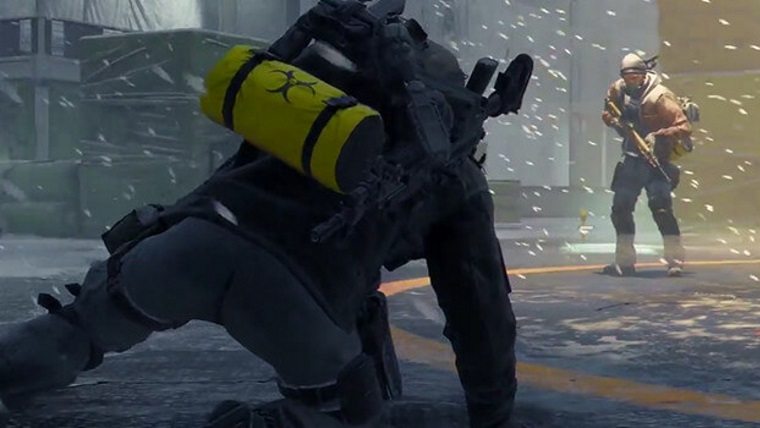
This definitely adds to the grind factor in The Division, as you not only have to grind in the regular game, but within the Dark Zone itself. Working against it even more is the fact that the Dark Zone doesn’t really have any pre-defined missions, instead offering the same level specific zones, with a couple of spots of potential enemy activity. Finding this activity can be a bit of a hassle, but tensions are always high as enemies can take you out very quickly, and other players are also a concern. You kind of have to make your own fun here, deciding where to go with your team, and hoping that there’s some interesting encounters along the way.
Surprisingly though, The Division has yet to devolve into the shoot-on-sight fest that other games of this ilk have. The Dark Zone feels very much like DayZ or other survival style games, but players are still acting very kind to one another, for the most part. You’ll still find roaming bands of bullies, taking out anyone that gets in their way, stealing their stuff, and moving on. However, in The Division, this behavior is discouraged by making players who attack others “go rogue”. This indicates to others their evil nature, and even puts a bounty on their head if they get too out of control. So far, this has created a more cordial atmosphere, where players have actually banded together on occasion, creating new friendships along the way.
One of the key differences between The Division and Destiny is in just how much the former gets right in the social area. Matchmaking is quick and easy, and players are able to be placed together in various locations. There are pretty much no restrictions on where you can go, and what you can do once you have a group put together. Want to take on a PvE mission? Go for it. Want to head into the Dark Zone. Have at. It’s all easy to pull off, and with integrated voice chat, even for those outside of your party, you can always make some new friends, while actually strategizing about the mission at hand.
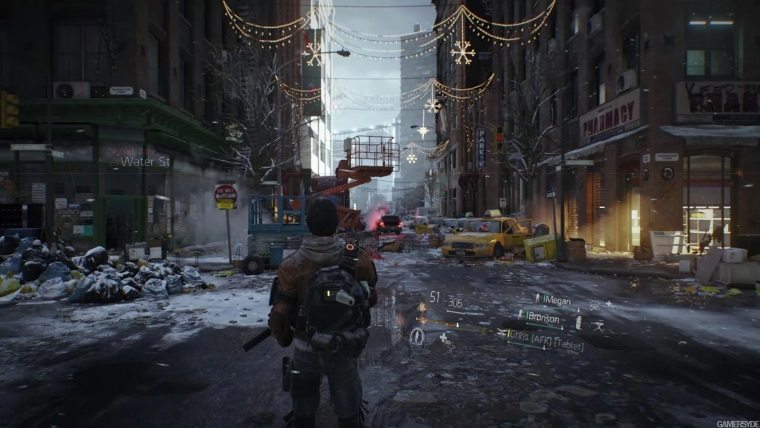
But none of this would work if the game didn’t present players with a good looking and interesting world to explore. While there is nothing quite as extreme as fighting aliens on the Moon, The Division offers a very realistic looking New York that oozes with atmosphere. Many sections of the map might be devoid of activity, leading to a lot of running around for players, but at least they’ll be able to look around and marvel at the architecture and overall visual quality of the game. Weather is the other important visual element, with fog and snow effects that can be truly mind blowing on PC, and everything is so well optimized that few will have trouble getting it to run at higher levels. Xbox One and PS4 might have lower visual fidelity, but it is still quite impressive on those platforms as well.
The Verdict
Tom Clancy’s The Division is a sort of Frankenstein game. Taking parts from shooters, MMO’s, RPG’s, and a few other sources, the game brings everything together into an amalgamation that could have easily fallen apart, had any one of those pieces not been fit perfectly into place. Thankfully they were, and the result is a fantastic experience in almost every facet. Of course, with this type of shooter, there are inherent issues, such as the need to grind through levels, bullet-sponge enemies, and the perpetual specter of the random number generator not rolling in your favor. But it all has been designed as well as one could ask for, and gamers should rejoice at having another excellent loot-based shooter to enjoy.


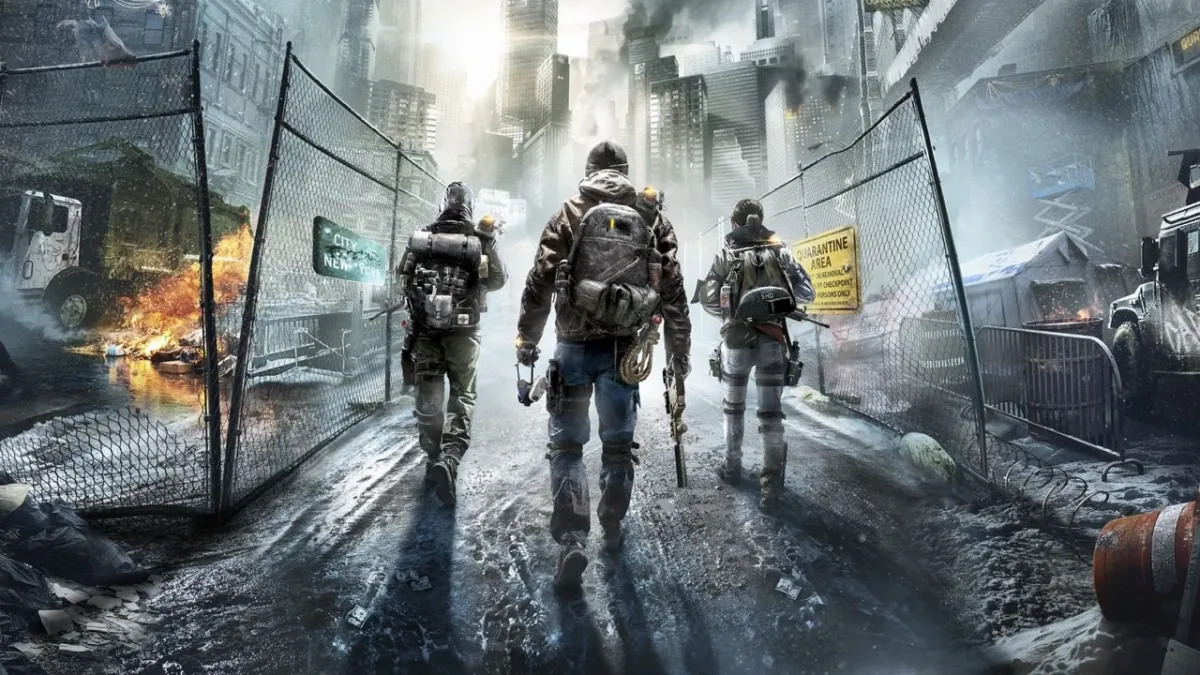








Published: Mar 10, 2016 03:22 pm